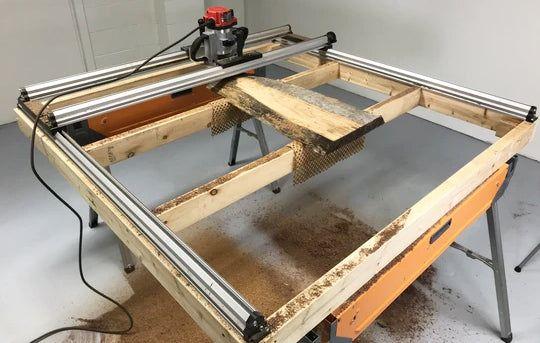Advanced Materials and Technologies in Linear Bearings: Enhancing Performance and Durability

The performance and durability of linear bearings are significantly influenced by the materials used in their construction and the advanced technologies employed in their design and manufacturing. As industries demand higher precision, greater load capacities, and longer service life, advancements in materials science and manufacturing techniques are driving innovation in linear bearing technology. This article explores the latest materials and technologies used in linear bearings, highlighting their benefits and applications.
Advanced Materials in Linear Bearings
- High-Strength Steels: High-strength steels, such as alloy steels and stainless steels, are commonly used in linear bearings to provide high load capacities and resistance to wear and corrosion. These materials are often heat-treated to further enhance their hardness and durability.
- Ceramic Materials: Ceramic materials, such as silicon nitride (Si3N4) and aluminum oxide (Al2O3), offer exceptional hardness, stiffness, and resistance to wear and corrosion. Ceramic linear bearings are ideal for applications where high precision and long service life are required, such as semiconductor manufacturing and medical equipment.
- Polymers and Composites: Polymers and composite materials, such as PTFE (Teflon), PEEK (polyether ether ketone), and fiber-reinforced composites, are used in plain linear bearings to provide low friction, self-lubrication, and resistance to chemical attack. These materials are often used in applications where lubrication is not possible or desirable.
- Coatings and Surface Treatments: Coatings and surface treatments, such as hard chrome plating, electroless nickel plating, and titanium nitride (TiN) coating, are applied to linear bearing components to enhance their hardness, wear resistance, and corrosion resistance. These treatments can significantly extend the service life of linear bearings in harsh environments.
Advanced Technologies in Linear Bearings
- Precision Grinding and Honing: Precision grinding and honing techniques are used to achieve extremely tight tolerances and smooth surface finishes on linear bearing components. These techniques ensure accurate and consistent performance.
- Finite Element Analysis (FEA): FEA is used to optimize the design of linear bearings, ensuring that they can withstand the applied loads and stresses without deformation or failure. FEA can also be used to predict the performance of linear bearings under different operating conditions.
- 3D Printing (Additive Manufacturing): 3D printing is being used to create custom linear bearing designs with complex geometries. This technology enables engineers to optimize the performance of linear bearings for specific applications and to create prototypes quickly and cost-effectively.
- Smart Sensors and Monitoring Systems: Integrating smart sensors and monitoring systems into linear bearings enables real-time monitoring of performance parameters such as load, speed, vibration, and temperature. This data can be used to optimize system performance, predict maintenance needs, and prevent failures.
- Self-Lubricating Technologies: Self-lubricating technologies, such as solid lubricant inserts and oil-impregnated materials, are used to reduce the need for external lubrication and to extend the service life of linear bearings. These technologies are particularly useful in applications where lubrication is difficult or impossible.
Applications of Advanced Linear Bearings
- High-Precision Machine Tools: Advanced linear bearings are used in high-precision machine tools to achieve extremely tight tolerances and smooth surface finishes.
- Semiconductor Manufacturing Equipment: They are used in semiconductor manufacturing equipment to provide precise and reliable linear motion in critical processes such as wafer handling and inspection.
- Medical Devices: Advanced linear bearings are used in medical devices such as MRI and CT scanners to provide smooth and accurate motion with minimal vibration.
- Aerospace Applications: They are used in aerospace applications such as aircraft control systems and satellite positioning mechanisms to provide high performance and reliability in harsh environments.
- Robotics: Advanced linear bearings are used in robotic systems to provide precise and repeatable motion with high load capacities.
Conclusion
Advanced materials and technologies are revolutionizing the design and manufacturing of linear bearings, enabling significant improvements in performance, durability, and reliability. By embracing these innovations, engineers and designers can create more efficient, precise, and robust systems for a wide range of applications.
Site içinde arama yapın
Kategoriler
- Art
- Causes
- Crafts
- Dance
- Drinks
- Film
- Fitness
- Food
- Oyunlar
- Gardening
- Health
- Home
- Literature
- Music
- Networking
- Other
- Party
- Religion
- Shopping
- Sports
- Theater
- Wellness
Read More
What Mike Williams Launch Indicates for the Chargers
The Chargers upon Wednesday launched Mike Williams, developing the veteran broad recipient a...
悅克電子菸與主機選購指南
對於喜愛精品時尚的消費者來說,選購合適的品牌包款是一種生活態度。近年來,許多人會直接透過 mk 包包官網...
Global Dupixent Market to Reach USD 28.70 Billion by 2034, Driven by Rising Adoption of Biologic Therapy
The global Dupixent market reached USD 13.96 billion. Analysts project steady...
Black Curtains as a Bold Design Statement — How to Use Them Without Darkening Your Mood
Black curtains carry an undeniable sense of drama and sophistication. Yet many homeowners avoid...
Fruit Spreads Market Leaders: Growth, Share, Value, Size, and Scope By 2032
"Competitive Analysis of Executive Summary Fruit Spreads Market Size and Share
CAGR...



